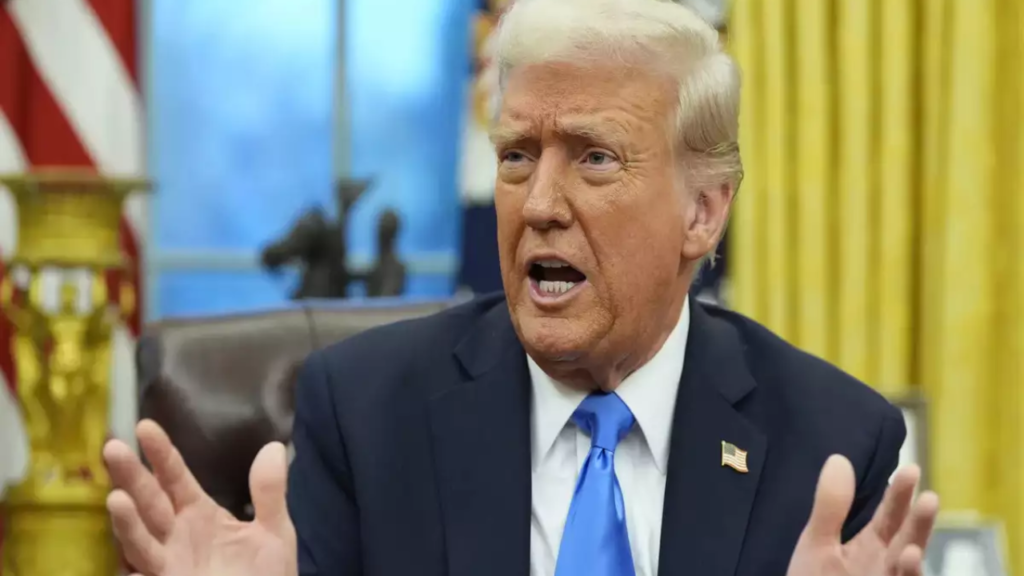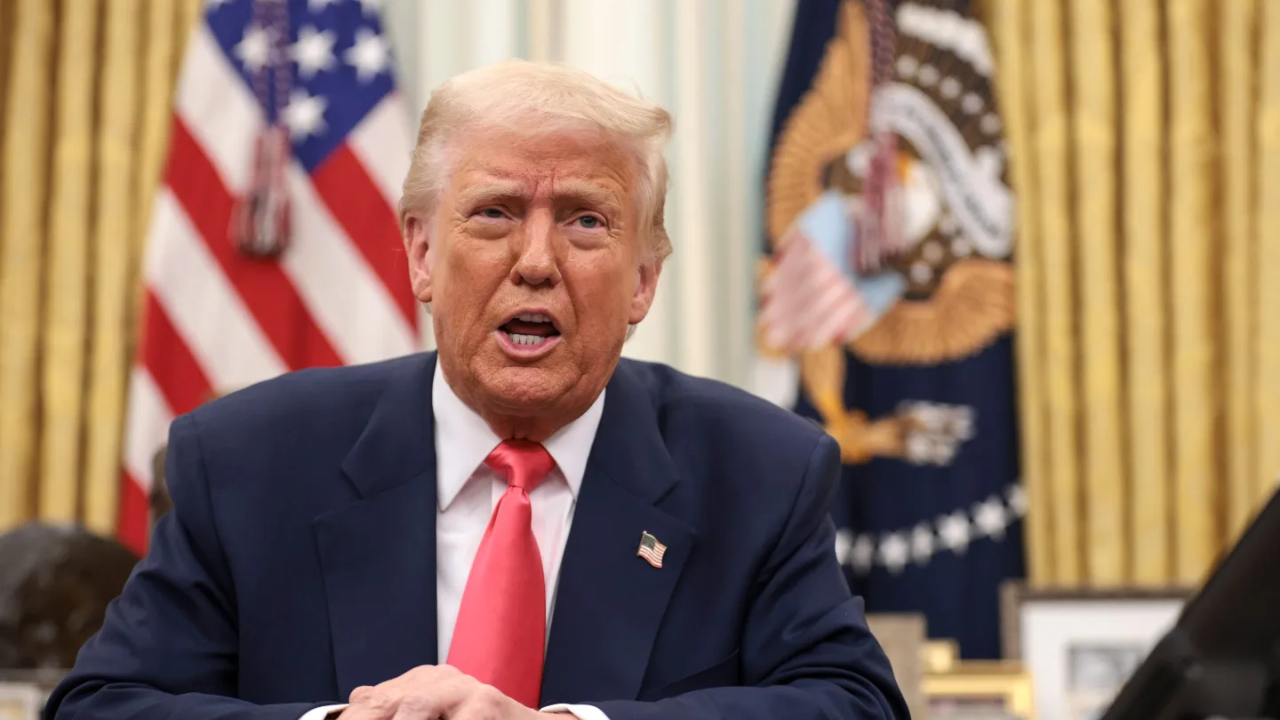Markets were unsettled during President Trump’s first term due to his unpredictable policies. His second term is expected to bring more of the same.
But beyond his transactional deal-making approach, what is his ultimate goal?
Trump’s Goal: Undoing Globalization
Trump has criticized the U.S. trade deficit since the 1980s, and reducing it remains central to his economic vision.
His administration’s blueprint for restructuring global trade was outlined in a November 2024 report by Stephen Miran, now the chair of the Council of Economic Advisers.
A Bloomberg podcast with Jim Bianco of Bianco Research also discussed key aspects of these proposals.
Key Economic Strategies
Trump’s administration aims to reduce federal debt, largely accumulated from U.S. military spending. Under Trump 1.0, NATO allies were pushed to meet a 2% GDP defense spending target.
Trump 2.0 raises that target to 5%, intending to shift military costs to allies and reduce U.S. expenditures.
Tariffs are another strategy to raise revenue, encourage domestic manufacturing, and weaken the U.S. dollar. The focus on North American trade partners like Canada and Mexico could further impact the trade-weighted dollar.
Additional economic measures include tax cuts, deregulation, fiscal consolidation, and interest-rate cuts, with Treasury Secretary Scott Bessent monitoring the 10-year Treasury yield as a key metric.
Other initiatives include stricter immigration policies, government spending cuts, and reduced foreign aid. The administration argues that these measures will cause short-term pain but lead to long-term economic gains.
Global Reactions to U.S. Policy Shifts

The effects of Trump’s policies are already being felt. At the Munich Security Conference in February, Vice President JD Vance criticized European failures instead of addressing security concerns.
His speech signaled a U.S. retreat from military commitments, prompting strong reactions from allies.
Germany responded with a €1 trillion defense and infrastructure spending plan outside its fiscal debt limits. Portugal canceled its F-35 fighter jet order due to concerns about U.S. reliability.
The EU is now developing a rearmament fund that excludes American, British, and Turkish suppliers. Canada is also reconsidering its F-35 purchase in favor of European alternatives.
The shift in U.S. foreign policy is being felt in Asia as well. At the Munich Security Conference, Singapore’s defense minister warned that the U.S. is moving from being a liberator to a “landlord seeking rent.” He questioned who could step in if the U.S. withdraws from global security leadership.
Tensions between Trump and Ukrainian President Volodymyr Zelensky have also fueled calls in Japan for nuclear armament.
Similar discussions may emerge in South Korea and other Asian nations, raising concerns about regional stability. Meanwhile, China is taking advantage of reduced U.S. soft power by increasing its influence in developing nations.
Economic and Market Impacts
Investors must weigh the risks and rewards of Trump’s policies. While the administration promises long-term benefits, the short-term consequences could be significant.
For 80 years, the U.S. security umbrella has provided economic advantages, such as lower inflation from globalized supply chains, lower interest rates due to foreign capital inflows, and higher asset prices from international investments in U.S. markets.
However, America’s retreat from global leadership could weaken the dollar’s dominance as the world’s reserve currency.
A fragmented financial system could lead countries to choose between maintaining U.S. dollar access, preserving policy flexibility, or picking sides in the U.S.-China rivalry.
Meanwhile, immigration restrictions could stifle innovation and productivity growth—historically, 40% of Fortune 500 companies were founded by immigrants or their children.
Future of U.S. Markets
Historically, the U.S. stock market has been a safe haven for investors, rising from 14.5% of global market capitalization in 1900 to 60.5% in 2023.
However, Trump’s policies may reverse this trend. Declining U.S. productivity, rising tariffs, and reduced global investment in American assets could diminish the stock market’s dominance.
Additionally, Trump’s aggressive reshoring policies may backfire. The U.S. relies on foreign investment, and retaliatory measures, such as countries selling U.S. assets instead of devaluing their currencies, could weaken markets.
Trump’s ability to fast-track economic recovery is also limited by a thin Republican majority in the House.
Potential Recession Risks
The UCLA Anderson School of Management has warned of a potential recession if Trump’s tariffs, tax cuts, and mass deportations are fully implemented. Analysts compare these policies to the supply shocks that triggered the Great Inflation of the 1970s.
If the administration influences the Federal Reserve to adopt overly loose monetary policies, the U.S. could face stagflation—low growth combined with high inflation.
The Risk of Trade Wars
Trump’s tariff strategy carries significant risks. Former President Ronald Reagan cautioned in 1987 that tariffs might provide short-term protection but ultimately hurt the economy.
He warned that high tariffs discourage innovation, invite foreign retaliation, and lead to shrinking markets, business closures, and job losses.
Conclusion
Trump’s economic policies are a gamble with both immediate and long-term consequences. While they aim to bolster American industry and reduce debt, they could also isolate the U.S. from global markets, weaken the dollar’s influence, and create geopolitical instability.
Investors and policymakers must carefully assess the risks as the world adapts to America’s shifting role in global affairs.
Disclaimer- Our team has thoroughly fact-checked this article to ensure its accuracy and maintain its credibility. We are committed to providing honest and reliable content for our readers.






